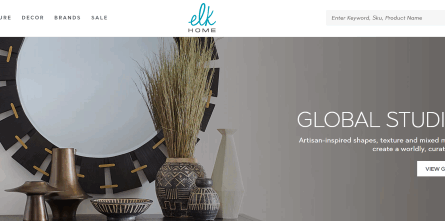Stores offer the company and its customers a direct link to consumer style preferences and purchases
FAYETTEVILLE, N.Y. — Dating back nearly 100 years, furniture retail has been part of the Audi family legacy, starting with the opening of E.J. Audi Fine Furniture in New York City.
And today, more than 50 years after the family acquired the Stickley brand from Louise Stickley, the widow of Leopold Stickley, it remains a core part of its operations. Featuring a core mix of Stickley product and other well-known names, it’s also part of the legacy of the brand, which is celebrating its 125th anniversary this year.
Today the company has 13 stores, including its flagship 77,000-square-foot location in Fayetteville, part of the Syracuse metro area that also includes neighboring Manlius, where its case goods factory is based.
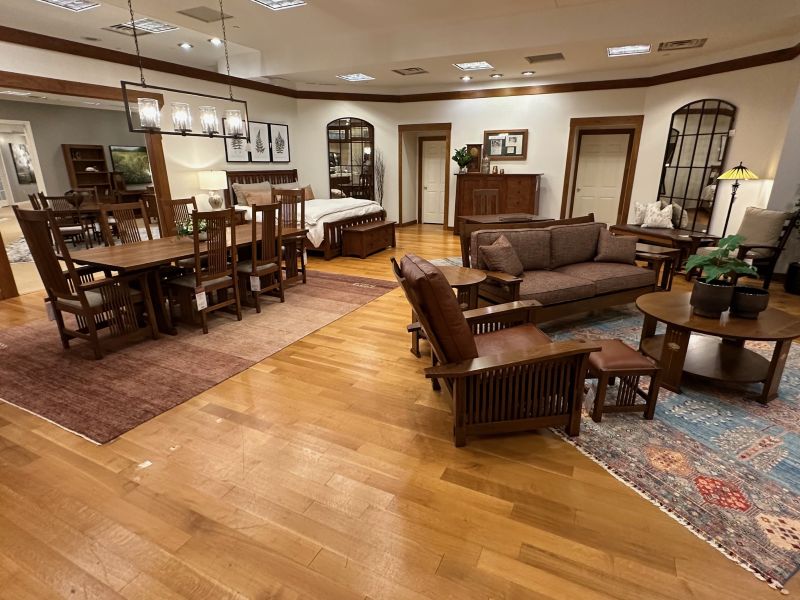
“This is a very successful showroom for us,” said Jim Torres, merchandise manager, noting that the flagship store also hosts training for other Stickley dealers and also helps test new Stickley product in the market.
As part of its overall selection of Stickley case goods and upholstery, the store also has a 5,000-square-foot gallery in the center, featuring a mix of new introductions and bestselling inline collections.
Of the gallery, Torres noted, “We can customize it and personalize it for any store. … It is a good way to show what Stickley is all about.”
With the average Stickley store footprint at roughly 24,000 square feet, newer locations range from about 8,000 to 10,000 square feet, noted George Gikas, vice president of retail and merchandising at Stickley.
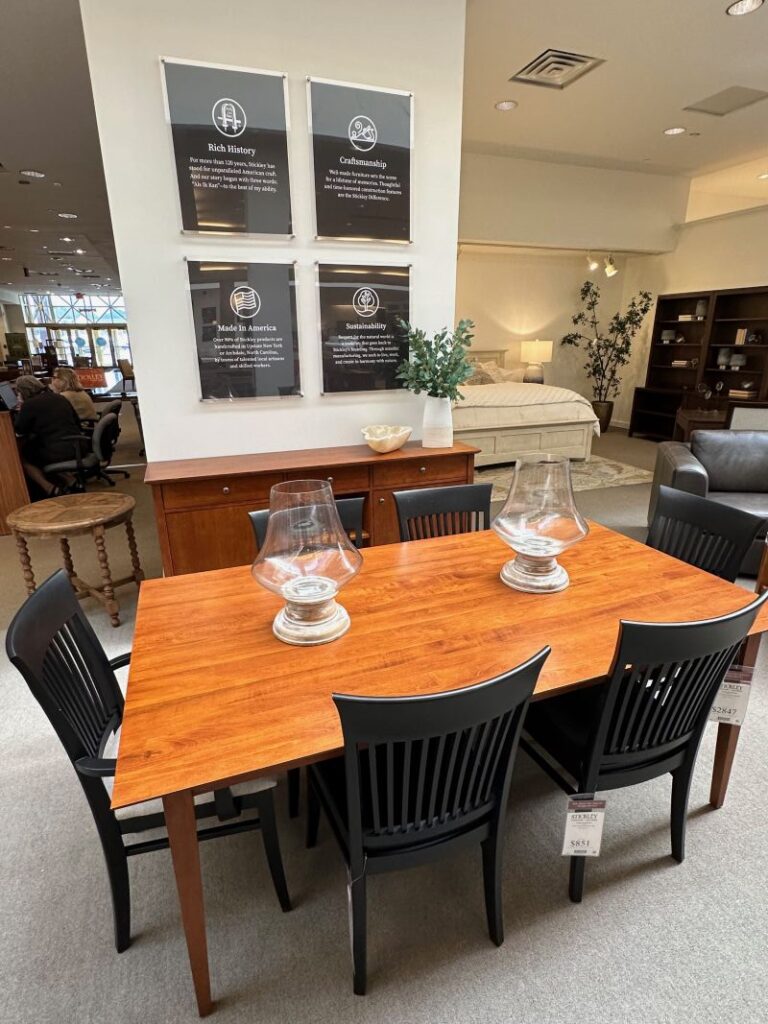
While the Stickley stores also carry several other brands, they are meant to showcase the depth and breadth of the Stickley line in a way that few other retailers can. In this manner, the stores serve as a platform for product testing, offering other retailers a window into what’s selling in different markets, some of which are similar to their own in that they serve an upper-end demographic.
In these areas and other parts of the country, Stickley customers can also purchase Stickley furniture on retailer websites and other e-commerce platforms. But the physical store locations (including other dealers where Stickley is sold) give them a chance to see and experience the product in person before purchasing online.
“It’s a big part of where the business is heading,” Gikas said of the e-commerce realm. “But we know that people also like to have the grounding of a good brick-and-mortar location where they can touch and see the product, too.”
The stores also offer consumers a chance to work with a designer whether they are selecting a finish or fabric or some other configuration, for example, with upholstery that’s curated to their own personal living space.
“Our designers offer that complimentary design service for projects, whether it’s a whole room, or a whole home for a client,” Gikas said. “That’s a little tougher to do obviously, online, or on your own.”
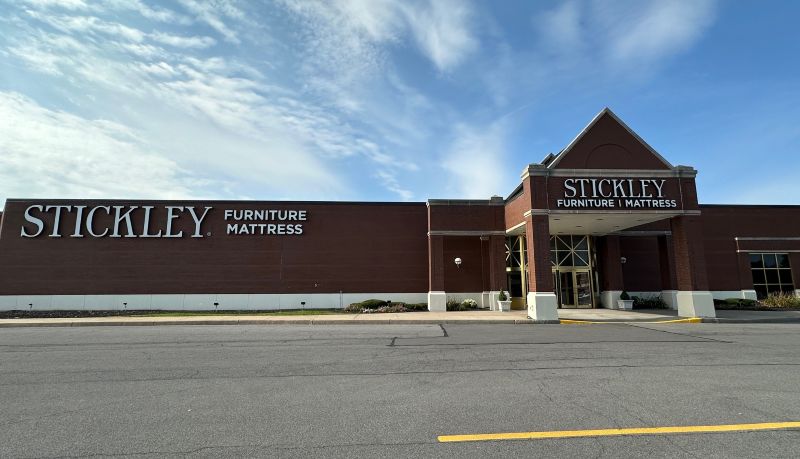
The physical stores also appeal to customers who are extremely loyal to the Stickley brand, whether it’s a long-time Stickley customer or a younger consumer whose parents or grandparents have passed down a Stickley piece or two.
“At retail, we have been able to broaden our audience,” Gikas said, noting that the emergence of new collections and styles beyond its core Mission aesthetic have appealed to new customers. “Every day people come in and are pleasantly surprised and become new customers as a result. We realize that there’s an element of marketing that draws a broader audience, but we find that most people who come are pleased with what they see.”
He added that the stores also give other retailers an idea of what’s selling, thus offering market intelligence that helps in their purchase decisions. Plus, dealer educational events held three to four times a year at the Fayetteville flagship store also provide further information about the line, while also giving them ideas on how to display pieces and collections in their own stores.
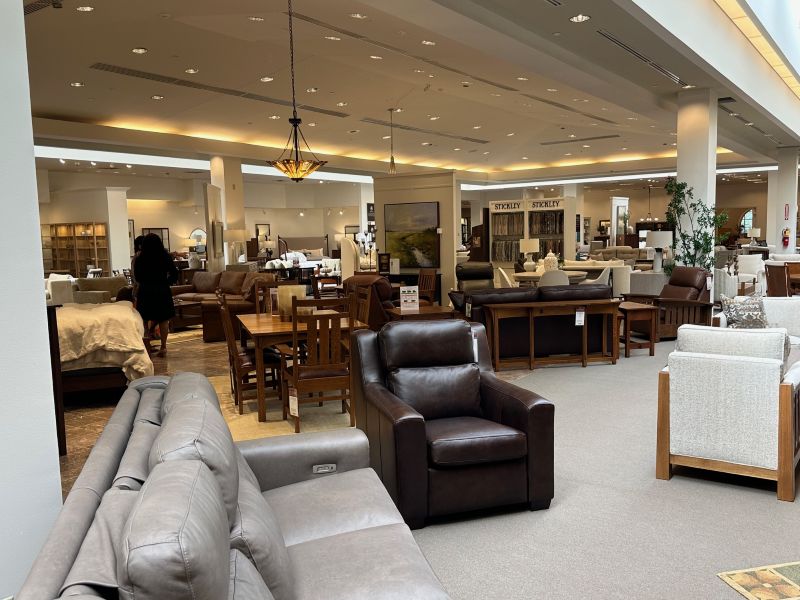
“We become a great provider of guidance on how to sell Stickley, not only as the manufacturer, but also with the retail intelligence behind it, too,” Gikas said. “It’s not only sharing knowledge with our dealers, but also bringing that knowledge back to our product development, which creates better products for our dealers, too. So there is a direct and an indirect benefit to our Stickley dealers as well as our own retail base as a result of us being retailers. I would say it’s a great advantage for our dealers for us to be able to do this and provide them that kind of information. And we’re getting more and more sophisticated with that.”

